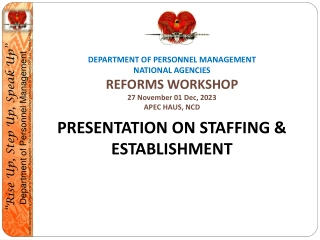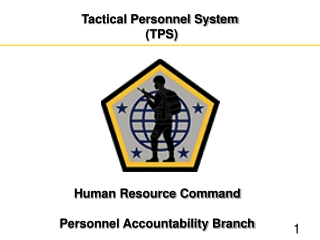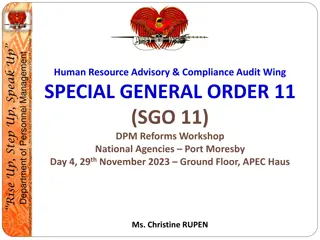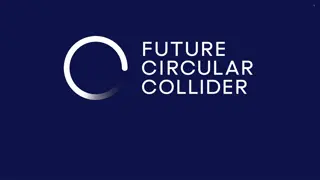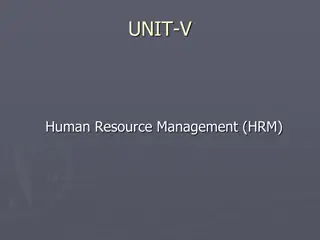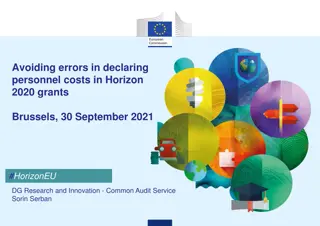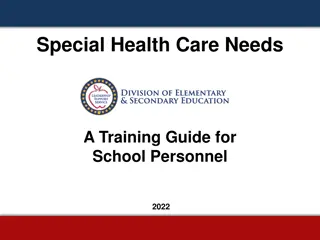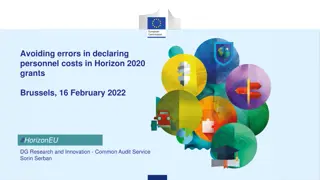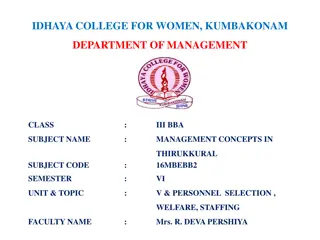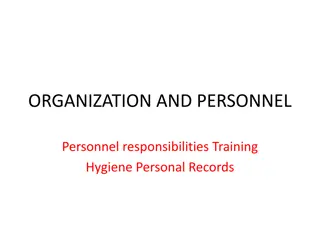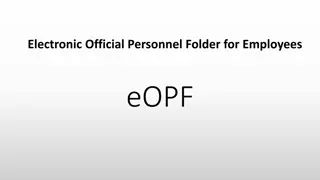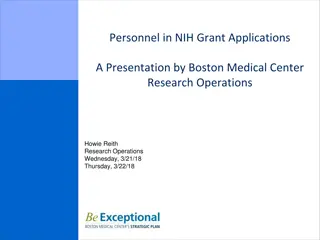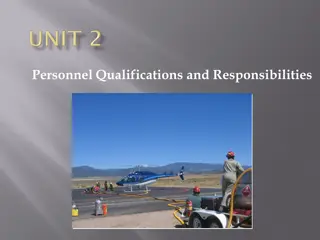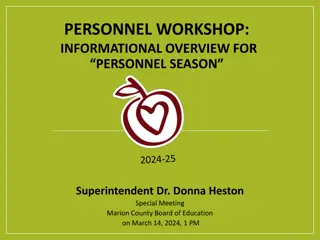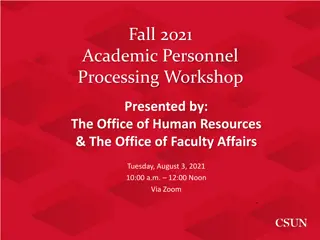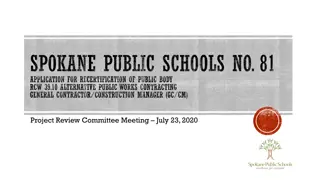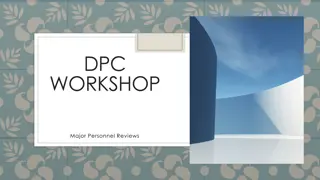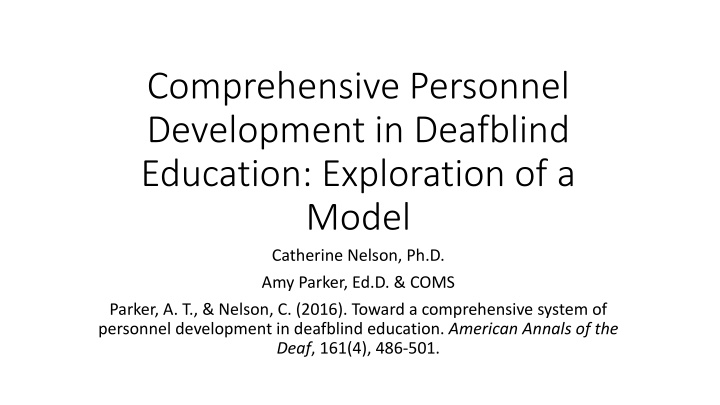
Roles of Teacher of the Deafblind in Educational Development
Explore the essential roles of Teachers of the Deafblind (TDB) in comprehensive personnel development for students with deafblindness. Discover how TDBs collaboratively assess needs, provide direct and indirect services, support communication systems, and promote assistive technology to meet sensory and educational needs.
Download Presentation

Please find below an Image/Link to download the presentation.
The content on the website is provided AS IS for your information and personal use only. It may not be sold, licensed, or shared on other websites without obtaining consent from the author. If you encounter any issues during the download, it is possible that the publisher has removed the file from their server.
You are allowed to download the files provided on this website for personal or commercial use, subject to the condition that they are used lawfully. All files are the property of their respective owners.
The content on the website is provided AS IS for your information and personal use only. It may not be sold, licensed, or shared on other websites without obtaining consent from the author.
E N D
Presentation Transcript
Comprehensive Personnel Development in Deafblind Education: Exploration of a Model Catherine Nelson, Ph.D. Amy Parker, Ed.D. & COMS Parker, A. T., & Nelson, C. (2016). Toward a comprehensive system of personnel development in deafblind education. American Annals of the Deaf, 161(4), 486-501.
Roles of Teacher of the Deafblind (TDB) Collaboratively assess the needs of students who are deafblind and ensure that each of the students identified as deafblind has an appropriate IEP with services and educational intervention to meet the goals outlined in the plan Direct Services (may be classroom-based or itinerant) Includes activities that incorporate: vision awareness and vision efficiency activities, auditory awareness and training, facilitation of communication including use of objects symbols, tactile symbols, and spoken, signed, or picture symbols literacy including braille and print assistive technology devices and applications curricular access
Roles of the Teacher of the Deafblind Indirect, consultative role Supporting and participating in planning with the entire team including the classroom teacher and intervener Assessment and evaluation of sensory and communication skills Creating, providing, and supporting the use of materials appropriate to sensory needs Information and support of communication systems Support of assistive technology Accommodations and modifications of instructional materials and activities to meet sensory and other educational needs (Blaha, Cooper, Irby, Montgomery, & Parker)
Recognition of the role of TDB Most states recognize the role of teachers of students who are deaf/hard of hearing and teachers of students with visual impairments Only three states recognize the specific role of Teacher of the Deafblind Utah Texas Illinois
Recognition of TDB 2012 NCDB needs assessment Focus groups reported that educational teams may advance the role of interveners as the most important component without recognizing the role of played by the TDB
U.S. Department of Education Efforts in DB Technical assistance through state deafblind projects Low-incidence personnel preparation
Cogswell Macy Act An effort that mirrors actions other recent sensory disability shared initiatives, such as the 21stCentury Communication and Video Description Act and the National Consortium of Leadership in Sensory Disabilities. Title III a. Identification- more nuanced than child find b. Related Services c. State Plans d. Evaluations e. Considerations of Special Factors- communication and language needs f. Technical Assistance for Parents and Educators g. Conforming Regulations AFB CMA
Comprehensive System of Personnel Development (CSPD) Need for sustainable, comprehensive national framework for addressing the need for qualified personnel at the local level Look to a model that has been implemented on national scale and refined and evaluated over time 1986 CSPD developed in response to Public Law 99-457 amendments to the Education of the Handicapped Act that mandated early childhood special education Renewed in 1997 and 2004 reauthorizations of IDEA for Part C Standards, preservice training, inservice professional development, recruitment and retention, leadership, coordination, and sustainability
Standards of Practice Pre-service Training Expanded Research Planning Coordination Evaluation In-service Training Leadership Development Figure 1. Comprehensive system of personnel development for children and youth who are deafblind. from Comprehensive System of Personnel Development, Center For Excellence in Developmental Disabilities: University of Connecticut Health. Retrieved from http://ecpcta.o rg/cspd/ UConnHealth.Adapted with permission. Adapted The Early Childhood Personnel Cente r, University
Standards of practice: What is in place Hilton Perkins Foundation with support from U.S. DOE Model Demonstration monies used a group validation approach for teacher competencies CEC Division on Visual Impairments (now DVIDB) pursued and published teacher of the deafblind and intervener competencies using a consensual validation process.
Standards of practice: Future directions Competencies are established, reviewed and updated on a timeline within the CEC. Recently the DVIDB has been reviewing, validating and updating competencies for TVIs. Within the next two years, DVIDB will establish a committee to review, validate and update the current competencies for Teachers of the Deafblind (TDBs) and interveners. Recent innovation configurations and research syntheses will inform the consensual validation process used by the CEC.
Preservice preparation: What is in place Different models in place Infusing deafblind competencies into existing course work in VI, DHH, and/or severe disabilities Specific coursework in deafblindness Deafblind specific coursework leading to specialization or endorsement coursework is typically interconnected with coursework in other disciplines students usually also get licensure in another related area
Preservice Programs: History and what is currently in place Programs developed in response to faculty interests, funding, and knowledge in the field Some programs emerged in response to specific needs of the time Low incidence funding through the Department of Education- OSEP Current programs include some funded entirely through OSEP, some through universities, and some funded by universities with student support provided by OSEP As of 2016, approximately 20 universities have been identified as having some deafblind themes or emphasis within coursework
Preservice programs: What is in place As of 2016, 7 academic institutions offered a specialization or graduate certificate in deafblindness Boston College, East Carolina University, Hunter College, San Francisco State University, Texas Tech University, the University of Utah, and Utah State University. Coursework in deafblindness has been delivered on campus and through various models of distance technology NCDB attempting to identify and coordinate the various efforts (NCDB, 2016)
Preservice preparation: Future directions Recognition of role of TDB imperative Without recognition of the role, university programs will be difficult to sustain TDBs need specific knowledge in assessment, instructional planning, and instructional delivery TDBs must also be prepared to provide guidance to other educators including interveners Recruitment efforts will be important Ensure that professionals in the field reflect the diversity of students
Preservice preparation: Future directions (cont 1) Innovations in course delivery and field supervision needed Field placements and field supervision with varying populations in varying settings, and roles TDBs need knowledge that is broad and deep across VI, DHH, and severe disabilities Knowledge in general education curriculum Support college bound students and those working on more basic ADLs Recognition that all skills will not reside in one person
Preservice preparation: Future directions (cont 2) Skills in collaboration, coaching and consultation needed professionals paraprofessionals families Related service providers such as O & M specialists, OTs, as well as professionals in other areas of special education should have access to deafblind coursework
Preservice programs: Future directions Collaborative funding and delivery Alignment and sharing of resources with fields of deafness, blindness, severe disabilities Resource sharing with agencies charged with inservice training Innovation in hybrid course delivery Practical opportunities to bridge coursework and field work Leverage of virtual communities of practice
In-service training: What is in place Ongoing need for professional support and enrichment National technical assistance infrastructure funded largely by OSEP Provide high-quality information and support at local level using onsite and distance technologies State projects work together to streamline production of products, reduce duplication Open Hand, Open Access learning modules
In-service training: Future directions Continued need for on-line learning communities, distance mentoring, and virtual professional development Continued need for face-to-face learning On-going dialogs with fellow practitioners and leaders in the field Coordination and alignment with University curricula
Leadership development: Professoriate Direct link between high-quality teacher preparation and training received by teacher candidates, so must be adequate supply of doctoral-trained faculty Demand is growing but supply is shrinking Retirements Diversity of special education career choices available to doctoral graduates 5 studies between 1989 and 2008 surveyed university personnel prep programs the US and Canada Slow growth of university programs in the area of visual education Difficulties with faculty recruitment Trend toward soft money programs as opposed to hard money staffed by tenure track faculty
Leadership development: Professoriate (cont) Since 2004, OSEP has funded three national projects to prepare doctoral scholars in the area of sensory disabilities National Leadership Consortium in Visual Impairments (NLCVI) Twice funded National Leadership Consortium in Sensory Disabilities (NLCSD) prepares scholars in VI, DHH, and DB- Tuition reimbursement, living stipend, support for travel to national conferences, enrichment activities, access to a cohort of other students in sensory disabilities 30 programs across 25 universities 4 programs representing deafblindness In first project, 3 scholars admitted in deafblindness, 5 in second project Some scholars in other areas completed research in deafblindness and are now teaching courses in deafblindness
Leadership development: Administrative State education agencies Schools for the Deaf and the Blind Local education agencies State Deaf-Blind technical assistance projects OSEP has funded both doctoral preparation (NLCSD) and Master s level preparation Helen Keller Fellowship program 11 University programs, 46 scholars trained Allowed for national cohort, mentoring, and enrichment Some university TDB programs are including internship opportunities with state and national deaf-blind technical assistance program
Leadership development: Future directions Sustained and increased doctoral level training Availability of hard money funding at universities Need for standards of deafblind credentialing at university level Initially, some sort of grandfathering Models have including national testing, portfolio review Currently, not a body in place that can look at credentials
The hub: planning, coordination, and evaluation Intertwined set of activities with high level of participation of various stakeholder groups Local, state, and national levels Vested partners from preservice and in-service, parents, and local and state education entities Coordination with state administrators with regulatory authority and OSEP including national technical assistance agencies At state level, planning could come from existing OSEP funded state deafblind projects which include advisory boards with broad stakeholder participation Development of multi-year state CSPD plan Processes to collect, store, and analyze data, use data to monitor and revise
Evaluation plan objectives Children are appropriately identified in order to receive services early Number of children and families who receive services increases Families are satisfied with IEP progress Educational outcomes improve Number of competent TDBs and interveners increases Number of training programs in adequate and sustainable Personnel are retained and supported Diversity and number of leaders increase
Evaluation plan questions How are personnel trained, supported and evaluated? How is ongoing professional development supportive of the foundation provided in preservice training programs? How are personnel affecting student outcomes, and which of the nationally recognized competencies correspond to better student outcomes? How do parents and family members perceive that personnel affect their child s educational outcomes? How do adults who are deafblind describe what teachers and interveners should believe, know, and do?
Research IHEs undertake coordinated efforts to expand the evidence-based body of research in deafblind education Evidence-based practices are widely disseminated to the field Evidence-based practices are integrated into standards
Conclusion The hub of the CSPD model- planning, coordination, and evaluation- is the core from which all components of the system radiate. It can be conceptualized as an intertwined set of activities that require high levels of participation of various stakeholder groups in order to be effective. The participation occurs both at state and national levels and involves vested partners from preservice and inservice, parents, and local and state education entities. (Parker & Nelson, 2016 p. 497) There is a benefit in being a highly connected and yet small network if we can rise to the ongoing challenge of working together on different parts of the model concertedly to achieve a shared vision for the field of deafblindness.

